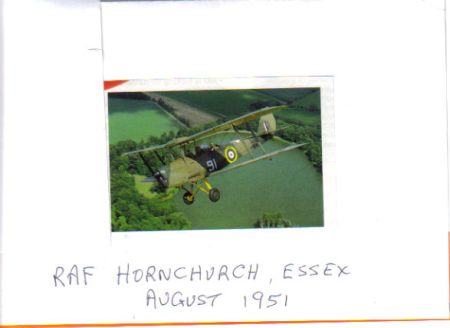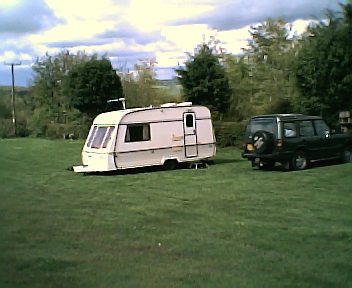
The above displays a copy of the brochure cover that was produced when the Jaguar 21 was first introduced in 1980.
I show this as I do not have a similar photograph of the boat with either of the two cars I have used for towing. ( A Land Rover Discovery and a Rover SDI 3500 SE V8).
Paragraph 103
CARAVAN CLUB TECHNICAL ADVICE
I have now deleted this paragraph as it has been seriously distorted by hackers.
It is now in
Addendum on strong winds.
17-12-08
I note that in the January 2009 issue of the Camping and Caravanning Club Magazine there is a reference to a Highways Agency Report claiming that 50% of road users would continue with a road journey despite hearing a severe weather warning of fog, ice, snow, rain or strong wind.
Concerning the “strong winds” forecast the Camping and Caravanning Club is partly to blame for the above lack of respect for road safety as it always follows the Caravan Club in such matters and it can be seen from the above that advice on strong winds needs to be much improved.
The new edition of the CC handbook is due out soon. It is to be hoped that this matter will have been rectified.
PARAGRAPGH 104 TOWING EXPERIENCE 
The above shows another view of the Bradwell 18 plus the Ace Pioneer caravan that I owned from 1982 to 1994. Aswell as the Austin/Morris Princess shown I also towed the Ace with a Marina 1800cc and the Rover SDI at various times.
I had a very serious snake when towing the Bradwell 18 with a Vauxhall Victor 101 1600cc. I only escaped disaster, potentially caused by an over taking HGV, by the narrowest of margins. If a serious snake is established one is powerless to do anything other than slow down and hope for the best as over run brakes are of no use in this situation. HGV drivers and trailer towers with electric brakes are better off as they can safely apply their brakes when snaking takes place.
I also had a serious snake (caused by a rather small over taking lorry) when towing the Ace with a Marina 1800cc on the then new M40 just south of oxford. With the same out fit on another date I had a tyre blow out on the M5 motorway near Birmingham at 50 mph. These events are covered in more detail further on in these blogs.
Addendum 29-1-08
Yesterday I observed on a large caravan dealer’s display shelves a “tyron.” This is a device which ensures that a caravan tyre stays on the wheel in the event of a “blow out.” For many years serious caravan snaking was almost always blamed on burst tyres; hence the need for “tyrons.”
I did not have a “tyron” when my Ace caravan tyre burst at 50 mph.
I was able to pull on to the hard shoulder without any swaying or snaking of the caravan. As a result of the “snaking tyre marks” details I received about 17 years later from a Police RTA Investigator I have been able to show that snaking could cause burst
tyres, but burst tyres were not the cause of the snaking. (see para 17a of my blog www.20six.co.uk/roadtrafficaccidents ).
Paragraph 105
Caravan Clubs
This part of the blogs is specifically aimed at members of the Caravan Club (CC) and the Camping and Caravanning Club (CCC). I have been a member of the CC for many years, and for the CCC I am in my fourth year of membership. The problem with both clubs is that the technical advice they offer misses out on a number of topics which members should know about to improve their safety on the road.
As the clubs and the caravan industry have been so reluctant to use electric brakes it is worth noting that the Goodrich corporation have recently announced that some Boeing 787 airliners are to be fitted with electric brakes made by the former.
Goodrich are also the makers of the control system for Rolls Royce engines on the Boeing 777.
If electric brakes for trailers are investigated via Google readers will discover that at current exchange rates USA electric trailer brakes are cheaper than the UK/EU over run system plus a friction based stabiliser .
The Caravan Club now seem to accept a revised view of caravan accident statistics. They recently had a small item in the CC magazine which said that although there were few caravan accidents, there were not many caravans around. I think that the statistics show that there are serious safety matters that the caravan industry and the Caravan Clubs must address.The CC officials also now seem to have accepted ( they also stated this in a small recent item in the CC magazine) that burst tyres can most probably be the result of caravan snaking, and not its cause. (see section 6a of my other blogs.)
It can now be seen how much important information on caravan and trailer safety has been left out of the article on page 26 of the March 2007 edition of the CC magazine, entitled, “Why Did I Crash?”
My other blogs on the same subject are:-
www.caravanaccidents2.wordpress.com paragraphs 1a to 10c and www.20six.co.uk/roadtrafficaccidents paragraphs 10ci to 18b
and www.caravanaccidents3.wordpress.com
A CCC Magazine Supplement, recently delivered to members.
I am pleased to note that last year’s CCC caravan safety advice has not been repeated in the latest “Tow Car Awards” Supplement. In 2008 the CCC had an item on the web ( which has now been withdrawn) stating that caravans were very safe and the accident statistics proved this.
The statistics prove the opposite if one takes into account the low number of miles covered by caravans and other recreational trailers. (Put “Caravan and HGV Trailer Snaking Accidents” in to the search engine of
The caravan club advice to Bath University (on miles covered by each member’s caravan) in connection with the 1994 Fratilla Phd thesis indicates that CC members’ vans each covered less than 1000 miles per year. As all vehicles other than caravans cover, on average, at least 10,000 miles per year, the statistics below need multiplying by at least 10 to give an indication of the risk of an accident when towing a caravan or trailer.
My risk is not so great as I am taking the precautions outlined at the start of this section (headed Paragraph 103).
The following has been copied from the internet:-
———————————————————————Welcome to the Highways Agency
Fit To Tow. (Video)
Text Version
Carol: Of course there are rules about what you can and cannot do and there are risks too. Last year alone accidents involving towing vehicles caused nearly fourteen hundred injuries and forty-three fatalities. So, how do we make sure when we’re towing we do it right?
——————————————————————————————————-
.
For further comments on the influence of Caravan Club/industry Policy on the Highways Agency video see my blog
.
2008
Tow Car Awards Supplement of the Camping and Caravanning Club Magazine.
On page 4 bottom left (of the current 2008 supplement) is an insert in blue which starts “Thanks to AL-KO for preparing the caravan ATC units for testing. …..”
We are thus being informed that this device was also part of the test;
page 51 contains a full page advertisement for the ALKO device.
Also on page 4 top right is a heading “AL-KO” followed by a sub heading “The Lane Change.” This paragraph starts, “The most violent of all our manoeuvres was designed to replicate an emergency lane change, …….”
Further down the same paragraph we have “ For the purposes of our test, the device (the AL-KO ATC) was disconnected from the brakes so as not to affect the outfit’s stability. …..”
It therefore follows from this assertion that the executives controlling the caravan clubs and the industry must have little confidence in the safety of the ALKO latest device.
At the bottom left of page 5 we have a heading ‘Braking and Acceleration.”
Emergency stops were carried out from 30-0 mph. I deduce from this procedure that the testers were advised not to risk doing an emergency stop from a more realistic motorway speed when towing a caravan ( even when having the benefit of the ATC) !
Judging from accounts I have read ( see my blogs) of USA electric brakes for caravans and trailers I would be prepared to do an emergency stop from 40 mph as a test with my own outfit
(the Discovery and the Swift 400 SE) if it were so equipped.
Furthermore I think the electric brake would be safe during an emergency lane change; before the value of sterling declined the electric brake hubs were cheaper than the over run brake actuating mechanism plus friction based stabiliser and conventional caravan hubs.
The electric brakes have been used in the USA and Australia for over 30 years. They use established and simple devices (electro magnets in particular). They need updating to electronic control, but at the moment they are the best solution as I can see no evidence of independent testing of the electronic element of the ALKO system. The old friction based stabiliser which they are still relying on (it is used in conjunction with the new ATC) has been tested by Bath University (2003) and myself (2006)
(see elsewhere in my blogs). My test found the old ALKO stabiliser of no use whatsoever, but due to the lack of understanding by Birmingham Trading Standards and the DfT Trading Standards Department of an item of GCSE Physics, my test has not yet been approved and the public continue to be at risk.
Top right on page 5 is a heading “High Speed Stability.”
The ALKO advertisement on page 51 for the ATC system shows a tow car and single axle caravan overtaking an HGV. Judging from the photograph of the MIRA test track there was plenty of room to have carried out a real test at 60 mph with an HGV as it is quite wrong to imply that a few sharp steering inputs give the equivalent of the aerodynamic effects experienced in a real over taking procedure. Also, I have found that the bow wave effect can be very considerable even when the HGV is moving slowly.
for copies of magazine articles above. These copies are after the EM relay diagram.
Para 3a — in the archives for April 2007
(Look up also the 1999 Bath University Wind Tunnel Research results of a similar overtaking procedure. One is inadequately recorded in the CC handbook. Others are recorded in various parts of my blogs).
Finally, the wind speed at the time and site of the test should have been recorded, with an appropriate instrument, and the results displayed in the Supplement together with the advice for particular tow cars. If the wind was above about 5mph there would be variable gusts during testing which would affect the stability of the tested cars/caravans differently in each case.
Even BBC 2 “Top Gear” uses a wind sock to check for virtually zero wind when towing caravans at very high speed, but to protect the “macho” image they do not advertise the fact. I think that the quick view I got of the limp wind sock was shown by accident.
Addendum 19-03-09
When I wrote the above report on the ALKO ATC I did not comment on the constructional details inside their “brown box.”
I was reluctant to spend 300 pounds sterling on an item which needs much further development.
However, I later recalled that their internet account states that the device must be drawing 15amps to signify that it is safe to drive. This must mean that a strong spring holds the brakes in the “on” position and that the electro magnet compresses the spring (when the electric current flows) so that the out fit can be driven.
This means that the brakes are “on” or “off” and this is bound to lead to the trailer wheels locking when used at speed.
With the USA type of electric brake there is the possibility of being able to change the braking force being applied by altering the amount of current flowing.
The 2007 CCC “Tow Car Awards” supplement reminded members (by means of small inserts displaying accident statistics) of the above CCC incorrect safety claims on many of the pages containing advice on the best tow cars.
www.weathercall.co.uk
is advertised.
.Strong winds can be a factor at all times of the year and a weather check with
to see further details of this matter.




